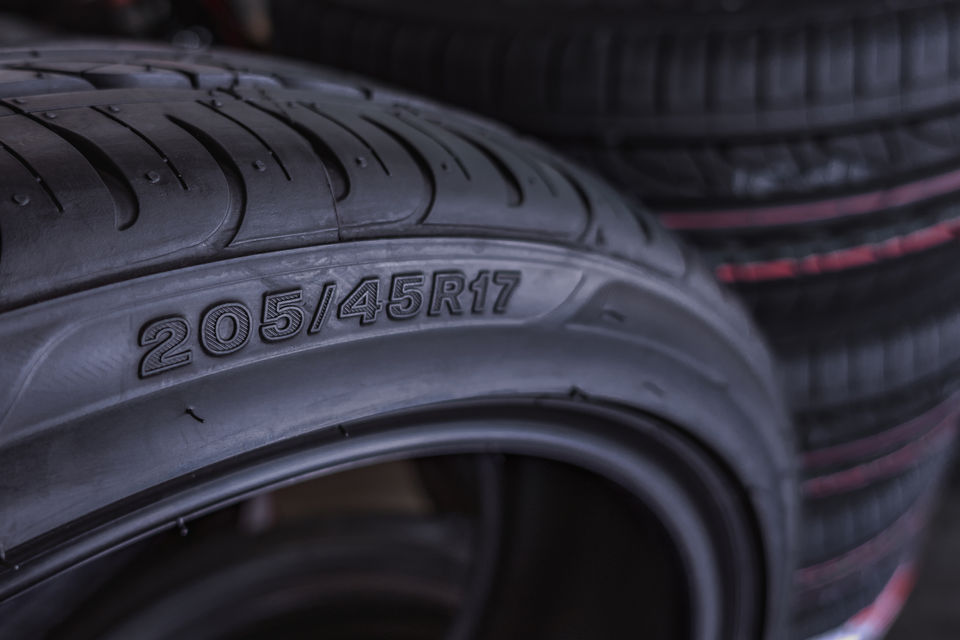
How To Read Tyre Sizes/Codes In Australia? [Answered]
Are you puzzled by the numbers and letters on your car’s tyres?
These alphanumeric codes indicate your tyre size and can be quite confusing if you’re not familiar with them.
But don’t worry! Whether you’re a car enthusiast or a regular driver, by the end of this article, you’ll be able to confidently decipher those codes on your tyres.
How To Read Tyre Size Number And Letter Codes?
Tyre sizes and codes consist of a combination of numbers and letters that convey important information about the tyre’s dimensions and performance characteristics.
Let’s take this code as an example and break down each component:
205/60R16 92S
Width
The first number in the tyre size indicates its width in millimetres.
In this example, the width is 205 mm. It represents a measurement of the tyre from sidewall to sidewall when properly inflated and mounted on a specified rim width.
Aspect Ratio
The aspect ratio is the second number in the size code and is expressed as a percentage. It denotes the ratio of the tyre’s sidewall height to its width.
In the given sample, the aspect ratio is 60, meaning the height of the sidewall is 60% of the tyre’s width.
Rim Diameter
Following the aspect ratio, the number 16 represents the rim diameter. It signifies the diameter of the wheel rim, measured in inches, on which the tyre is designed to be mounted.
Load Index
The load index is a numerical code that corresponds to the maximum weight a tyre can carry. It is typically found after the size code and ranges from 1 to 150.
In the above sample, the load index is 90. The higher the number, the greater the load-carrying capacity of the tyre.
Speed Index
The letter at the end of the code corresponds to the speed index. It denotes the maximum speed at which the tyre can safely operate. For instance, S indicates a maximum speed of 180 km/h.
Understanding Width, Aspect Ratio, and Rim Diameter
The width, aspect ratio, and rim diameter of a tyre collectively determine its physical dimensions and compatibility with your vehicle.
Width
The width of a tyre affects its contact patch with the road.
Wider types offer increased stability and improved handling, but they may also increase fuel consumption. Narrower tyres, on the other hand, provide better fuel efficiency and reduced road noise.
Aspect Ratio
The aspect ratio influences the tyre’s ride comfort and handling characteristics.
Tyres with a lower aspect ratio (50 or below) are considered low-profile tyres. They provide enhanced cornering stability and responsiveness but may sacrifice some ride comfort. Higher aspect ratio tyres (60 or above) offer a smoother ride and better shock absorption.
Rim Diameter
The rim diameter determines the size of the wheel on which the tyre can fit. It’s important to choose the appropriate rim diameter specified for your vehicle to ensure proper fit and maximum efficiency.
Decoding Load And Speed Index
The load and speed index are essential indicators of a tyre’s performance capabilities.
Load Index
The load index represents the maximum weight that a tyre can carry. Overloading a tyre can lead to poor handling, increased wear, and even tyre failure.
Speed Index
The speed index denotes the maximum speed at which a tyre can safely operate. Using tyres with a lower speed rating than recommended can compromise safety, while opting for higher speed ratings allows for increased performance.
Importance Of Knowing Your Tyre Size
Safety
Properly sized tyres ensure optimal traction, handling, and braking performance, reducing the risk of accidents.
Performance
Choosing the right tyre size and specifications can enhance your vehicle’s overall performance, including fuel efficiency, cornering ability, and ride comfort.
Compatibility
Tyres that match your vehicle’s recommended size ensure proper fit and compatibility with the suspension and braking systems, enhancing safety and performance.
Maintenance
Knowing your tyre size allows you to monitor and maintain proper tyre pressure, which promotes even wear, extends tyre life, and improves fuel efficiency.
Conclusion
Reading tyre sizes and codes may seem daunting at first, but with a little understanding, you can decipher the important information they provide.
By familiarising yourself with these codes, you can make informed decisions when purchasing tyres.
Safe driving!

Louis
I'm Louis, an engineer passionate about helping Australians choose better tyres for their vehicles!
